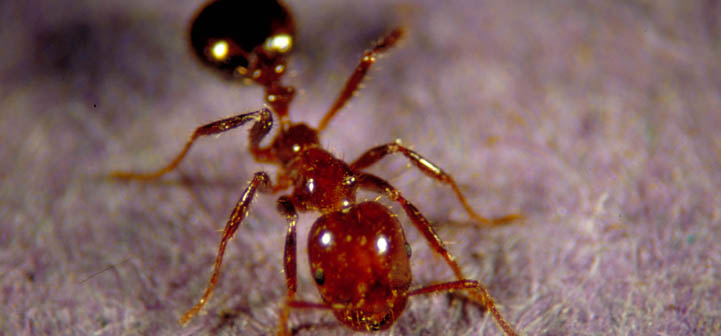Imported fire ants can cause problems on poultry farms by attacking chickens and foraging on broken eggs. Fire ant stings cause blemishes that can reduce the quality of poultry. For management of imported fire ants in and around poultry houses, select programs that use, where applicable, a combination of chemical and nonchemical methods that are effective, economical, and least harmful to the environment.
For poultry houses and egg farms, use a combination of the following suggestions:
- Remove food sources (trash, spilled feed, broken eggs, and dead chickens) and potential ant nesting sites (pieces of lumber, old equipment, and manure piles).
- Remove weeds and grass from around poultry houses with mowers or herbicides.
- On grounds surrounding the buildings, use the Two-Step Method. Conventionally formulated bait products, such as abamectin (Clinch), fenoxycarb (Award), hydramethylnon (Amdro or Amdro Pro Fire Ant Bait), pyriproxifen (Esteem), s-methoprene (Extinguish Professional Fire Ant Bait) or hydramethylnon plus methoprene (Extinguish Plus), can be broadcast applied outside the poultry house. Do not allow chickens access to fire ant bait or bait-treated areas. Treat individual fire ant mounds that are an immediate threat or that have escaped the bait treatment using a faster-acting insecticide such as a dust, granular, drench, or bait-formulated product registered for this use on these turfgrass areas.
- If ants are nesting inside poultry houses, treat surfaces with a registered contact insecticide product. Some products, like those containing contact insecticides such as permethrin (e.g., Y-Tex GardStar), are registered specifically for control of fire ants in poultry houses.Other products, like those containing cyfluthrin, dichlorvos, and lambda-cyhalothrin, are more generally registered for crawling pests including ants. Read the poultry section of labels for additional precautions. Do not allow insecticides to come into contact with feed or water supplies.
- If fire ants are foraging inside the poultry house from ant mounds located outdoors, a chemical barrier can be established around the outside of the building with contact insecticide products registered for that usage site (e.g., lambda-cyhalothrin). The steps above can be adapted to broiler houses, provided the products used are registered for this use. Confine treatments to the outside of broiler houses to prevent freely roaming chickens from being exposed to insecticides. The best method is to implement Step 3, above. With ants controlled outside, there will be fewer ants to be attracted to food sources inside.
Related Content
Find more information about fire ants in eXtension’s Imported Fire Ant Resource Area.

